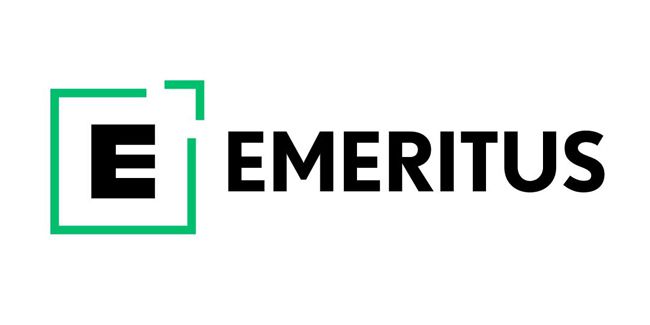When creating an eLearning course, one of the most important goals is to make sure your training engages and sticks with your learners, and one of the most effective tools for achieving this is storytelling.
The art of storytelling goes back to the beginning of mankind. Stories have the capacity to convey information in an interesting, relatable manner that makes it easier for learners to process the concepts being taught. Integrating storytelling in eLearning courses creates a better, more effective learning environment, ensuring better outcomes for your training initiatives.
In the guide below, I’ll discuss why using storytelling in your courses is so important, how to incorporate it, and how the highly-rated Emeritus Professional Instructional Design bootcamp can help you master this and other essential eLearning development skills.
The Impact of Storytelling on the Brain
Storytelling engages and transforms the brain in ways that are distinct from traditional teaching methods.
When we absorb information through a story, rather than through dry text or a list of bullet points, our brains light up in different areas, not just those associated with language processing. In fact, studies show neural activity in the brain is 5 times more when we’re listening to a story.
This holistic brain engagement helps us to remember and internalize information more effectively.
This immersive experience is due to the release of specific chemicals in the brain during storytelling. Initially, cortisol grabs our attention, followed by dopamine, which rewards us with feelings of pleasure. Oxytocin also plays a crucial role, working in concert with cortisol and dopamine to foster a sense of connection and empathy.
This chemical interplay makes storytelling a powerful tool in eLearning. It not only captures attention but also emotionally engages learners, leading to a deeper, more meaningful learning experience.
The ultimate goal of using storytelling in eLearning is to inspire a change in behavior or attitude, achieved by the unique way stories alter our brain chemistry and make the learning experience memorable and impactful.
Why Use Storytelling in eLearning?
Now that you have an understanding of how storytelling engages the brain, let’s go over some of the benefits of using it in your eLearning modules.
- Memorable Learning Experiences: Think about the stories from your childhood—fairy tales, parables, superhero tales. You probably still remember a lot of them pretty clearly, unlike many a forgotten history lesson from middle school. There’s research that indicates you’re 20 times likelier to remember information if it’s presented in story format. To make your content unforgettable, weave it into a narrative, complemented by engaging visuals and infographics.
- Simplifying Complex Ideas: Stories have the power to illuminate and simplify. By following a character’s journey and the challenges they face, learners can see practical applications of theoretical concepts. Complex and abstract ideas become accessible and relatable when told in the form of stories, enriched with anecdotes and metaphors, making the learning process informative and also relatable.
- Engagement and Attention: Anyone who’s taken a class online knows how easy it is to zone out and get lost. Using a compelling story can help to avoid this. A well-told story engages the brain more effectively, going beyond just presenting the facts. This not only activates various brain regions but also captivates learners’ attention, significantly reducing the chance of missing crucial information.
How to Use Storytelling in Your eLearning Projects
So, how can you start to incorporate storytelling in your eLearning courses and modules? Here are a few tips I’ve learned over the years.
- Structure it properly: Think about your course as a narrative journey with a clear beginning, middle, and end. Start by setting the scene and outlining what learners will gain. The core of your course should delve into the concepts or skills, breaking down complex topics into digestible pieces. At the end, recap the key takeaways and reinforcing the main messages.
- Make sure it’s relatable: Make your content resonate by embedding it in real-world contexts. You need to incorporate scenarios, examples, or case studies that learners can actually connect with, grounding abstract concepts in familiar experiences.
- Use character-driven narratives: Characters bring your story to life, making it relatable and engaging. In eLearning courses, you can create personas that reflect diverse learner types, offering varied perspectives and illustrating how different individuals might engage with the content.
- Introduce conflict and resolution: A story thrives on conflict and its resolution. Incorporate challenges or obstacles within your course narrative, then explore various solutions. This approach isn’t just good for engagement. It also encourages learners to think critically and consider multiple approaches to problem-solving.
- Use multimedia elements: Make your storytelling more interesting with images, videos, and other multimedia. Pairing narratives with striking visuals or animations can make complex ideas more accessible and memorable, enriching the learning experience.
- Embrace interactivity: Make your course an interactive adventure. Include simulations, quizzes, and interactive exercises that allow learners to influence the story’s outcome. This level of engagement deepens their connection to the material, making learning more impactful and personalized.
Master the Art of Creating Highly Effective eLearning with Emeritus
 Emeritus Professional Instructional Design Certificate | Online Certificate Course
Emeritus Professional Instructional Design Certificate | Online Certificate Course
Gain firsthand expertise in instructional design principles and methodologies through this unique Professional Certificate program. Create impactful learning solutions and improve people's ability to learn.
The next class kicks off on October 22, 2024, so don't miss your chance to enroll now! Take advantage of early bird discounts leading up to the kickoff date:
20% off until September 3
15% off until September 24
10% off until October 15
If you’re looking to master the art of creating highly engaging and effective eLearning, the Professional Certificate in Instructional Design from Emeritus is a powerful program you’ll want to check out.
In just 5 months, this intensive bootcamp covers everything you need to know to break into the field of instructional design.
You’ll learn about important instructional design methods, technologies, and best practices to develop comprehensive online courses.
With a strong focus on practical real-world application, the program teaches you the skills to design, implement, and assess learning experiences that are both innovative and impactful.
Whether you’re transitioning from teaching, looking to advance in your current role, or starting a new career path, this program offers the tools and insights you need to thrive as an instructional designer.
A Final Word
Storytelling is one of the oldest art forms and is a powerful means of communication and influencing thoughts and actions.
Using storytelling in eLearning can make your online courses more engaging, memorable, and impactful. By embedding lessons within stories, you tap into the emotional and cognitive processes that enhance retention and understanding.
Have any questions about using storytelling in eLearning? Let me know by leaving a comment below.



